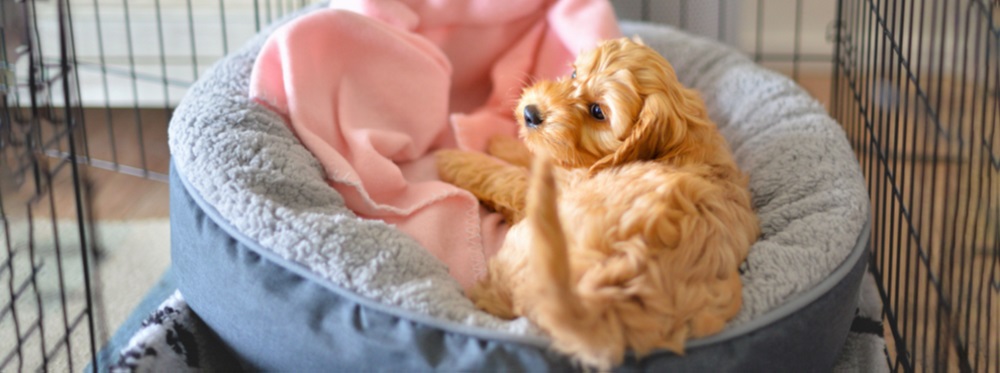Crate Training

Crate training is an important part of bringing a dog of any age into your home. Providing a sense of security and safety for your dog – while giving you greater peace of mind – dogs of all ages benefit from proper crate training.
Most vets, trainers and breeders recommend beginning crate training from an early age. As an essential part of housebreaking puppies, crate training helps to strengthen their bladder and bowel muscles, reducing the likelihood of indoor accidents later in life.
Crates also act as safe havens for older dogs and can be useful in emergencies, sometimes being the difference between safety and uncertainty. Should you ever need to evacuate your home, having a cooperative dog who gets into their crate quickly saves crucial time. Crates help dogs learn to self-calm or deal with their anxiety during stressful situations like fireworks, storms, or construction. Dogs can retreat to their crates when situations are too chaotic or scary and can help them navigate new situations successfully, for example the addition of a new baby to your home.
Five key tips on crate training like a pro:
1. Choose the right crate
Select a crate that’s durable, comfortable and fits in to whatever training you’re doing. Knowing how large your dog will grow means you can buy a crate that’s suitable for their adult size. Then, you can use a divider to grant them more space as they grow.
2. Create positive associations
The more dogs associate their crate with a relaxed environment, the more likely they’ll view it as a place of rest. Start by bringing them in for 10 minutes at a time and avoid it when they’re in play mode.
3. Reward positive behaviour
When they’re in the crate, reward them with a treat! Something like a chew toy or lick mat will keep them satiated, stimulated, and keep them comfortable for longer periods.
4. Keep an eye on the time
Outside time is still just as important as crate time. Dogs don’t want to soil where they sleep, so ensure they’re able to retain a consistent schedule of exercise, play and toilet time.
5. Set them up for success
Once you’re ready to give your dog more crate time, do it in small amounts – you don’t want to take off for hours on end. Gauge your dog’s demeanour, monitor for changes in mood and reward with treats. It’s important to remember that crate training shouldn’t be viewed as imprisoning your dog. Dogs are territorial, den animals, and a crate gives them their own space and can calm anxiety.
Create positive associations between your dog and their crate by rewarding good behaviour or interactions with treats. And finally, be patient. Crate training can take several months of consistent work – good things take time.
Check out our dog insurance page to find out more on our pet insurance options for you and your pet.